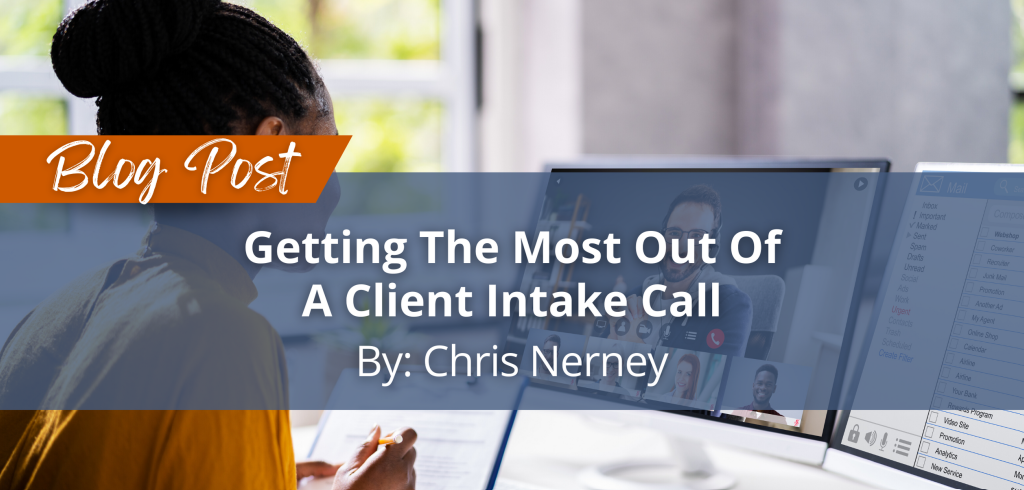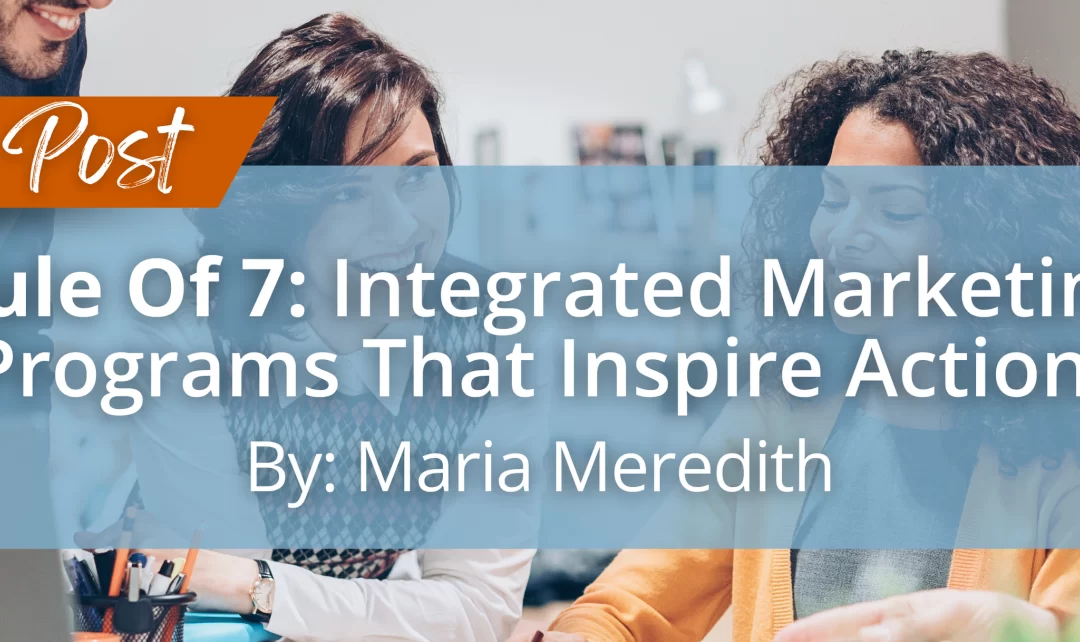
by Chris Nerney | Feb 28, 2024 | Blog
Healthcare marketing and public relations agencies work closely with clients on crafting effective messages designed to gain the attention of (and prompt action from) their potential customers, investors, media outlets, awards organizations, conference organizers, and other target audiences.
Clients and agencies routinely rely on email and collaborative platforms such as Slack and Teams to communicate about messaging ideas and strategies. Still, there’s no substitute for live, verbal conversations. And while meeting in person is always best, the pandemic made Zoom calls a simple and convenient way of life in the professional world. Other than not knowing how tall everyone is on Zoom, it’s just like being in a room together!
When it comes to creating strategic, high-value content assets for clients – such as “thought leadership” bylines, case studies, and white papers – it is essential that agencies and clients arrange what we refer to as an “intake call” to discuss the asset’s target audience, goals of the content, main message, and major takeaways.
Intake calls are both a resource and an opportunity; thus, failure to take full advantage of these sessions can undermine the client’s goals and the ability of the agency to create compelling content. Unfortunately, far too many intake calls are unproductive and fail to provide the agency’s account directors and writers with enough direction to ensure quality content assets. Inevitably, the writing suffers, leading to more time wasted on editing and rewriting that could have been avoided.
Among the many reasons why intake calls go off the rails:
There’s no predetermined topic. I’ve been on my share of calls where the topic of the content asset had not yet been specified. As a result, much time is consumed just kicking around ideas. Once an idea is chosen, the call participants then have to hammer out a message and supporting themes. Without preparation, this process can be highly inefficient, which means the agency team may not get all the information they need from the call within the allotted time.
The “subject matter expert” (SME) is unprepared. Client SMEs are very knowledgeable about their areas of expertise. They’re also quite busy, particularly if the SME is a CEO. Thus, even if a topic has been preselected or an outline produced as a guide for the call discussion, the SME may not have had time to do any prep work. This also can lead to an inefficient and unsuccessful intake call.
The SME lives in the weeds. Some client SMEs can clearly and fluently communicate their company’s technology, market strategy, and product use cases. Other SMEs are CTOs. Just kidding! Seriously, though, SMEs who immerse themselves in technological details can struggle to concisely explain to a non-tech audience how their companies’ platform or tools can help customers.
Too many people on the call. Though this doesn’t happen much with start-ups, I’ve written custom content for large technology vendors as a freelancer and have been on calls with eight, 10, or more client-side participants. I’m not naming names, but one company rhymes with Oracle. These “cast of thousands” mega-calls can be incredibly frustrating and unproductive.
Intake call best practices
So what can marketing/PR agency pros do to ensure they and their clients get the most value they can out of intake calls?
Prepare a list of questions to guide the discussion. Giving the conversation a framework and some direction can make an intake call more efficient and productive. What’s the technology or healthcare challenge? What’s at stake for patients, clinicians, payers, etc.? What are the possible solutions?
Get down to business. I like to chat, and I like learning about people I’m working with. (Is that so wrong?) But when you only have 30 minutes to capture a client’s thoughts about a complex healthcare challenge, it’s best to smoothly move past initial pleasantries and get the show on the road.
Make the client verbalize the value of the asset. Even if you know the topic of the content asset, even if you have a tentative title, and even if you have bunch of on-point questions, it’s always a good idea to ask the client to explain 1) the target audience 2) what the goal of the asset is, and 3) how they would describe the asset to a colleague (“This byline is about…”). The more clarity an agency’s writer and account director have, the more likely they will produce an asset that meets or exceeds the client’s expectations.
Conclusion
Both healthcare technology startups and their marketing/PR agencies are far too busy to waste time on unproductive content asset intake calls. While it’s hard to control how ready clients are for intake calls, agency account and content directors can optimize the value of these Zoom meetings by being prepared, guiding client participants through the conversation, and seeking clear language about the topic and goals of a content asset.

by Kim Mohr | Feb 8, 2024 | Blog
Heading to
ViVE 2024 in Los Angeles or
HIMSS24 in Orlando? These key industry trade shows aren’t just a chance to escape the winter weather for warmer destinations! They can present a great opportunity for executives to establish relationships with journalists from a variety of publications and mediums.
Chances are if you’ve landed an interview, it’s for a brief window, so read on for best practices for making the most of your time.
Most journalists attending trade shows start to populate their calendars weeks, if not months, in advance – which is why many PR pros also start early to secure interviews for key subject matter experts. It’s important for companies to identify which trade shows they will be attending as well as key personnel well ahead of the show. This can be done as part of an annual marketing plan. An added benefit to planning early is that some shows offer early bird registration, so you may even get a deal to attend.
If you’re offered an interview, make sure you have basic knowledge of the outlet, the topics it covers, and their target audience. You’ll want to frame your responses in a way that’s relevant to readers of the publication.
For example, if the outlet targets members of the C-Suite, big-picture, high-level strategic responses are appropriate. If readers or listeners are clinicians, you’ll want to address clinical or patient benefits of your technology. You can’t tailor your answers if you haven’t researched the outlet. Additionally, reporters appreciate it when you reference past stories they’ve done on the topic at hand. This shows that the relationship is a two-way street and further establishes that you aren’t only interested in talking about your company – and are dialed in on relevant conversations and coverage of key issues in the industry.
The show floors at ViVE and HIMSS are a maze of vendors, sponsors, analysts, media and more. Be sure you keep and use the map you get at check-in. Confirm your meeting location. Is there a designated media meeting area? Will the reporter be stopping by your booth?
Find out and arrive early for the interview. Set an alarm in your phone to remind you of the meeting, just in case you get caught up talking to a client, prospect or colleague. With only a few minutes for each interview, if you’re late, you might miss out depending on the reporter’s schedule. We’ve seen this happen many times. While many journalists will graciously offer to connect another time, the odds of it happening in a timely manner are understandably slim, as journalists are just as busy in the days immediately following a show as they are while they are onsite.
There’s nothing worse for PR professionals than sitting through a client interview where the interviewee rehashes old news or espouses cliches. If you want to stand out in the crowd, have something to say. Everyone knows that “innovation is key” and “AI is the future.” But how is your company disrupting your space? How does this benefit patients, clinicians and others in the healthcare ecosystem? Where do you see the industry going and how are you helping to get there? What are you doing that’s different than the other guy?
Clearly defining your differentiators (without directly referencing the competition) and outlining talking points ahead of time are key for a successful interview. For extra credit, have a colleague or your PR team do a mock interview in which you can practice steering likely questions to your talking points. And remember, if you don’t know the answer to a question, it’s perfectly acceptable to say you will follow up. Don’t try to answer what you don’t know.
Pro tip: Shows such as ViVE offer the opportunity to share news in a group distribution to media attending the event. This is an extra opportunity for you to get your message in front of journalists who will be there. While you may not get an interview out of it, your news could be included in a roundup during the show or in a post-event wrap-up.
Remember that every meeting does not yield immediate coverage. However, we have repeatedly seen “meet and greets” at trade shows turn into follow-up, in-depth interviews or coverage that seems to be out of the blue months later. The main goal of these trade show meetings is to meet key journalists, introduce them to your company and technology, and explain why you are making a difference in the healthcare scene.
- Give them something to remember you by
Have you done a recent study, survey or analysis? An eye-catching infographic with meaningful information and guidance (URL or QR code) on where to learn more can be something that sets you apart from others. However, don’t give journalists run-of-the-mill marketing collateral. Anything you leave behind should have a news peg and not simply be self-serving information about the company.
This may be the most important tip of all. While you shouldn’t be overly casual and should always keep in mind that nothing is ever really “off the record,” you do want to establish a rapport with the reporter. Interviews don’t need to be buttoned up and extremely formal. Use a conversational tone and avoid jargon whenever possible.
Best of luck with all your trade show media opportunities!
For more tips on getting the most from trade shows, check out these tips.

by Jodi Amendola | Jan 18, 2024 | Blog
Many of the challenges that healthcare organizations faced in 2023 – inflation, labor shortages, worker burnout, and narrow margins – are likely to persist in 2024.
These factors are certain to make for a challenging operating environment, and most healthcare executives are taking a clear-eyed, creative look at how to overcome these looming barriers over the next year—including the use of novel health tech and medtech.
Only 3% of health system executives and 7% of health plan executives report having a “positive” outlook for 2024, according to Deloitte’s annual “Health Care Outlook Survey.” Those numbers are down substantially from the prior year, when 15% of health system executives and 40% of health plan leaders reported positive outlooks.
Nonetheless, healthcare organizations will no doubt continue to invest in new technology solutions to surmount many of the operating obstacles that are confronting them. But which technologies are likely to deliver the biggest impact in healthcare in the next year? I wanted to hear from the experts, so I polled a number of my contacts in the healthcare analyst community. Below are their predictions.
- Jennifer Eaton, RN, MSN, CCDS, CRCR, research director, value-based healthcare digital strategies with IDC, notes that key industry players will continue to invest in digital solutions that support operational efficiency, optimized value, cost containment, and patient-centric care.
“This year will usher in an evolution in value-based care initiatives (i.e., reducing health disparities, accurate predictive analytics, AI-supported workflows, and hyper-personalized engagement strategies) that are especially appealing as payers and providers aim to strike a balance between the cost and quality of care,” she said. “As healthcare organizations continue to face a variety of challenges such as inflationary pressures, labor and skills shortages, clinician burnout, and evolving consumer expectations, organizations are focusing on digital transformation and digital infrastructure creation that supports automation, deeper intelligence, and real-time insights that can minimize the drudgery and low-value work that has plagued the healthcare industry and shift this valuable time and attention to the patient.”
- While much of the industry’s focus in 2023 was on the challenging operating climate for hospitals and health systems, payers will face similar obstacles next year, according to Jeff Rivkin, research director, payer IT strategies, IDC.
“Payers face payer-provider convergence, care delivery modernization, digital business expectations, and adopting a unified healthcare experience in 2024, on top of mandates around price transparency and prior authorizations,” Rivkin said. “It’s hard to make money only being a health insurance company, so creative innovations and business models will thrive to address cost-of-care, labor shortages, and legacy technical debt.”
- Since the emergence of Chat GPT, generative artificial intelligence (AI) has been among the hottest topics in health IT, as well as executive suites across nearly all industries. As generative AI models mature, healthcare organizations will increasingly look to implement them, according to Delfina Huergo Bensadon, senior research and consulting analyst, Frost & Sullivan.
“One of the digital health trends we are seeing at Frost for 2024 is the increasing adoption of generative AI in healthcare organizations, as the physician’s main concern of accountability is addressed globally through regulations, such as the AI Act,” she said.
- Elena Iakovleva, research analyst, Chilmark Research, foresees increasing investment in AI-based technologies to improve both patient care and healthcare administration.
“Remote Patient Monitoring (RPM) solutions will definitely be on the rise,” she said. “Often the accuracy of existing monitors isn’t that good (Hi, Apple Watch and friends) and without a doubt in 2024, major RPM vendors will be competing for the best data available to train their models.”
Additionally, AI will continue to transform providers’ approach to revenue cycle management (RCM), according to Iakovleva. “We have been observing tremendous growth of various RCM-oriented AI technologies,” she said. “In 2023 it feels like we hit a critical mass and by the end of 2024 we should start seeing a big change in RCM departments across the U.S. and professions associated with RCM.”
- John Moore III, managing partner, Chilmark Research, foresees increased emphasis on the importance of healthcare organizations addressing patients’ social determinants of health needs.
“We will see the first ‘backbone’ organizations funded by federal grants connecting with care organizations to create closed-loop referrals to community-based organizations,” Moore said. “Safety-net and capitated hospitals already piloting ‘food pharmacy’ and other healthcare-related social needs initiatives will receive federal funding for these programs via new community-benefit designations.”
Of course, we already know what the biggest news story of 2024 is bound to be – the presidential election – and healthcare, as usual, is sure to play a role.
“With the 2024 election looming, both parties will step up pressure around reigning in healthcare costs and system abuses to win points with the electorate,” Moore said.

by Brandon Glenn | Jan 3, 2024 | Blog
The sad state of local news in the U.S. is hardly news to anyone who has spent time in public relations and journalism.
News outlets across the nation are continually going out of business, creating “news deserts” where communities are largely devoid of any reliable sources of credible information.
Though often overlooked, local news outlets can be valuable resources for public relations professionals and their clients. Whether they are general interest dailies, weeklies, or business publications, these media outlets are often interested in milestone topics that don’t necessarily appeal to trade or national media, such as hiring plans, headquarters’ expansions, acquisitions, and other factors that may affect the local economy.
Over the last 15 years, ”the local news crisis has metastasized like a slow-moving cancer coursing through the bloodstream of enclaves from suburbia to rural America,” as a recent report on the state of local news from Northwestern University’s Medill School so eloquently phrased it.
The report is full of stark and sobering numbers and facts. For example:
- The nation has lost one-third of its newspapers and two-thirds of its newspaper journalists since 2005
- An average of 2.5 newspapers closed each week in 2023
- Roughly half of all U.S. counties are now only served with one remaining local news source — typically a weekly newspaper
- Most communities that lose a local newspaper typically do not get a replacement, even online
The decline of local news should be concerning for anyone who cares about democracy, good governance, and public accountability. Why? Studies have shown that the decline in local news has increased political polarization, led to more political corruption, and let outlets that spread misinformation fill the void, the AP reported.
Indeed, this dearth of reliable, community-level information “poses a far-reaching crisis for our democracy as it simultaneously struggles with political polarization, a lack of civic engagement, and the proliferation of misinformation and information online,” the Northwestern report states.
Wealthy corporations to the rescue? What could go wrong?
Against the backdrop of this escalating existential crisis for local news, I was interested to read a proposal by marketing thought leader extraordinaire Joe Pulizzi, founder of the Content Marketing Institute, who suggests that newspapers should follow the model of sports teams selling stadium naming rights to private companies.
Pulizzi throws out the example of his hometown Cleveland Plain Dealer, struggling with a barely there print product and less-than-attractive website, selling its naming rights to local megacorporation Progressive Insurance. Pulizzi notes that Progressive pays $3.6 million a year for the naming rights for the Cleveland Guardians’ stadium, while it spent $1.37 billion on advertising in 2022, so another $3 million to sponsor a newspaper represents the equivalent of loose pocket change for the insurance giant.
It’s an intriguing idea and one that we could see experimented with around the country, though as Pulizzi correctly notes, “A key challenge in making this concept a reality is ensuring mutual expectations are met for the businesses receiving such subsidies.”
Ahh, yes, there’s the potential problem. In other words, what kind of deference might Progressive’s executive suite and board of directors expect from The Progressive Plain Dealer when they object to the tone of its editorial coverage?
Corporate sponsorship would create a minefield of ethical challenges for journalists, the communities that rely on them for information, and corporate executives. If the past is any indication, this will not end well for journalists and their communities.
In my decade or so of experience as a business journalist one thing became abundantly clear: People who have accumulated a substantial amount of wealth, power, and influence will virtually always use that wealth, power, and influence to further their own interests. In a sense, they can’t help themselves. What’s the point of rising to power if you can’t use that power?
So, returning to the Progressive Plain Dealer example, what happens to the outlet’s news coverage when Progressive suffers an embarrassing public relations gaffe? What if the CEO’s country club buddy gets popped for a DUI? What if a political candidate the CEO is personally backing is shown to have used campaign funds to pay hush money to a porn star?
In all these scenarios, and countless others we could imagine if we took the time, I would virtually guarantee you that Progressive would use its funding, and the threat of revoking it, to try to slant the news outlet’s coverage in a way that is more favorable to Progressive’s viewpoint and business interests. The community would sense and suspect this, damaging the Progressive Plain Dealer’s credibility with its readers, and potentially plunging us back into the local news crisis all over again. Alas, cash rules everything around me, as some wise philosophers once reminded us.
Nonetheless, I applaud the creativity in seeking out solutions to the local news dilemma and may soon have little choice but to welcome our new corporate news overlords.

by Maria Meredith | Dec 6, 2023 | Blog
As an agency that works exclusively with healthcare, health IT and life sciences companies, this is a startling stat: U.S. hospitals waste over $12 billion annually as a result of communication inefficiency among care providers. Helping our clients succeed with clear, consistent communication is in our DNA for good reason.
Working with our clients as they seek to communicate clearly with their target audiences across the healthcare industry, the old marketing “Rule of Seven” still applies. Basically, this rule states that it takes an average of seven interactions with your brand before a prospect will take action, which in the B2B world may be to commit to a meeting. That’s why integrated marketing programs designed to communicate across multiple channels are so important in today’s noisy, cluttered media landscape. Here are several considerations to develop effective campaigns that deliver on the Rule of Seven.
Set clear, measurable campaign objectives
Always start with a clear understanding of who you want to target, what action you want them to take, and what information they need to understand how you can meet their immediate need. A common mistake is not segmenting the target audience into personas with specific needs that are met by your solution or service. Rather, it’s most effective to develop a strong value proposition for each persona and deliver your message through focused campaigns.
In addition, identify key performance metrics right up front for every campaign. With an eye to the objectives, how will you measure success – webpage visits, landing page conversions, meetings scheduled? Be sure to set a baseline and target results. As the campaign progresses, use the metrics to guide adjustments to continuously improve performance.
Create compelling content
In today’s content-rich environment, it’s vital to tell a coherent story about how you meet the needs of your target personas across all your channels, from your website to social media to thought leadership to campaign content and sales enablement assets. By first understanding the type and depth of information each persona needs at each step in the buying process, you can identify what content will be most effective for each campaign.
Offering a mix of content is an important aspect of the Rule of Seven. Different people within your target audience will respond best to different types of content. Some focus on short-form content such as social media posts, infographics and videos. Others prefer long-form content, such as articles, eBooks and white papers. Long-form content can always be repurposed into short-form content, which more effectively uses resources while delivering consistent messaging. Overall, it’s important to deliver a mix that consistently drives them toward the final call to action.
Extend reach across multiple channels
Every integrated marketing campaign should leverage as many channels as possible to meet target audiences where they are – your website, social media, outbound email, digital advertising, search, events and tradeshows. And as highlighted above, use a mix of short-form and long-form, written and video to reach your audience. Pay particular attention to how to make content pop visually for each channel – over 50% of marketers agree that visual content is essential to their marketing strategy, leading to more engagement from audiences.
Align media relations and thought leadership efforts
It’s also important to create crossover between focused campaigns and proactive media relations and thought leadership programs. Published articles make valuable assets to incorporate in campaigns. By creating pitches that address the needs of journalists while connecting with the key messages for your target personas, you leverage another important channel for reaching your audience.
Integrated marketing programs that communicate across multiple channels using compelling content help rise above the noise and connect with your audience in ways that deliver results. With the Rule of Seven in mind, marketers can create meaningful brand interactions that show how your solutions meet the needs of your prospects, making them more apt to take the next step toward purchasing your solution.

by Chris Nerney | Nov 15, 2023 | Blog
Healthcare PR and marketing agency pros work with multiple clients at a time. That’s a lot of technologies, services, business strategies, marketing messages, workflows, timelines, and personalities to understand and manage.
It’s easy for us to feel overwhelmed because healthcare technology clients by definition are working on cutting-edge technologies that can be challenging to comprehend, never mind explain to an audience. Conversing regularly with healthcare startup founders about the clinical-grade, model-informed, reverse-engineered algorithm they developed to transform healthcare as we know it – when they weren’t working their side gig as a highly regarded neurosurgeon – is a humbling experience. My encyclopedic knowledge of BoJack Horseman episodes barely measures up.
But here’s where things get even more complicated: Not only does each client have all that stuff I mentioned in the first paragraph, they also are trying to reach multiple audiences.
That matters, because to craft an effective message you need to both identify and understand the target audience. The first question I ask clients when we’re on a call with a subject matter expert to get information for a writing assignment – a byline, a press release, a white paper – is, “Who’s the target audience?” Even if I already know, I’ll ask anyway just to make sure we’re all on the same page and to get more details. Plus it’s a great icebreaker!
Know what each audience cares about
At the most basic level, every healthcare technology company has three distinct audiences: customers (both potential and existing), investors, and the media. Let’s start with the less complicated audiences: investors and the media.
Investors view healthcare technology as, well, an investment. So while they may thoroughly believe in the technology and what it will do for patients, providers, payers or some other stakeholder, their primary interest is whether their investment pays off. Investors want to hear about the market opportunity, growth strategy, financial and growth metrics, the expertise and experience of the management team, and how the company intends to become profitable.
A media audience is looking for an interesting story. That might be the background of your client’s founders, the scope of the challenge your client is trying to address, and how many lives the client’s product or service will change. Even media outlets that drill down into the details of healthcare technology, business, and policy want to cast the content they publish in human terms.
You can best understand what type of content specific media outlets are interested in publishing by actually reading what they publish. (Pro tip!) If your client is all about the revenue cycle, you’re not likely to draw interest from a website that covers medical devices.
Customers are more complicated because many healthcare companies may be trying to reach several subsets of customers. For example, one of Amendola’s clients I write for markets its platform to hospitals, health information exchanges, labs and clinics, and health plans. Each of those target audiences has its own priorities and needs. As a marketing/PR agency, it is our job to effectively address the specific pain points of each target audience.
Listen, research, and listen some more
So how can we best understand each of the client’s target audiences? One way is to talk with someone at the client who interacts regularly with customers and prospective customers.
For example, if the target audience is customers and potential customers, I would want to hear from sales executives. They are the people who listen to customers describe their business goals and challenges, explain what problems they need to overcome, and articulate what they need (or don’t need) from the type of solution the client is selling. Once you can identify the problems a customer wants solved, you have the raw ingredients for crafting a targeted, compelling message using the customer’s language.
Unfortunately, sometimes it’s hard for a PR/marketing agency team to get time with a client’s sales exec because they’re busy selling (hopefully!). It’s much more common for agencies to work with the client’s technologists, who typically are among the founders. While their ability to explain the company’s technology within the context of various use cases is indispensable, it’s the sales team that understands challenges from the customer’s perspective. They have an outside-in perspective, rather than the inside-out view of many technologists.
A less direct way to learn about a target audience is through online research. That includes using ChatGPT and other generative AI tools to find information. (Just make sure it’s not hallucinated info.) Learning the lay of the land within a client’s competitive sphere provides more perspective to help inform the content you create. Large consulting agencies such as McKinsey and Accenture have ambitious healthcare practices that offer comprehensive market analyses.
Developing customer personas also can help marketing/PR agencies hone their messages by providing a crystal-clear picture of a target audience. What are the backgrounds, values, preferences, and pain points of the chief technology officers targeted by your client? They undoubtedly would be different to those of the chief financial officer or chief medical officer. Interviews, surveys, and feedback can be used to refine those personas.
Conclusion
No healthcare client has a single target audience. All of them at some point will need to communicate the appropriate messages to investors, the media, and various customer groups. Marketing/PR professionals must be fluent in all these languages to ensure they are helping clients achieve their goals.





